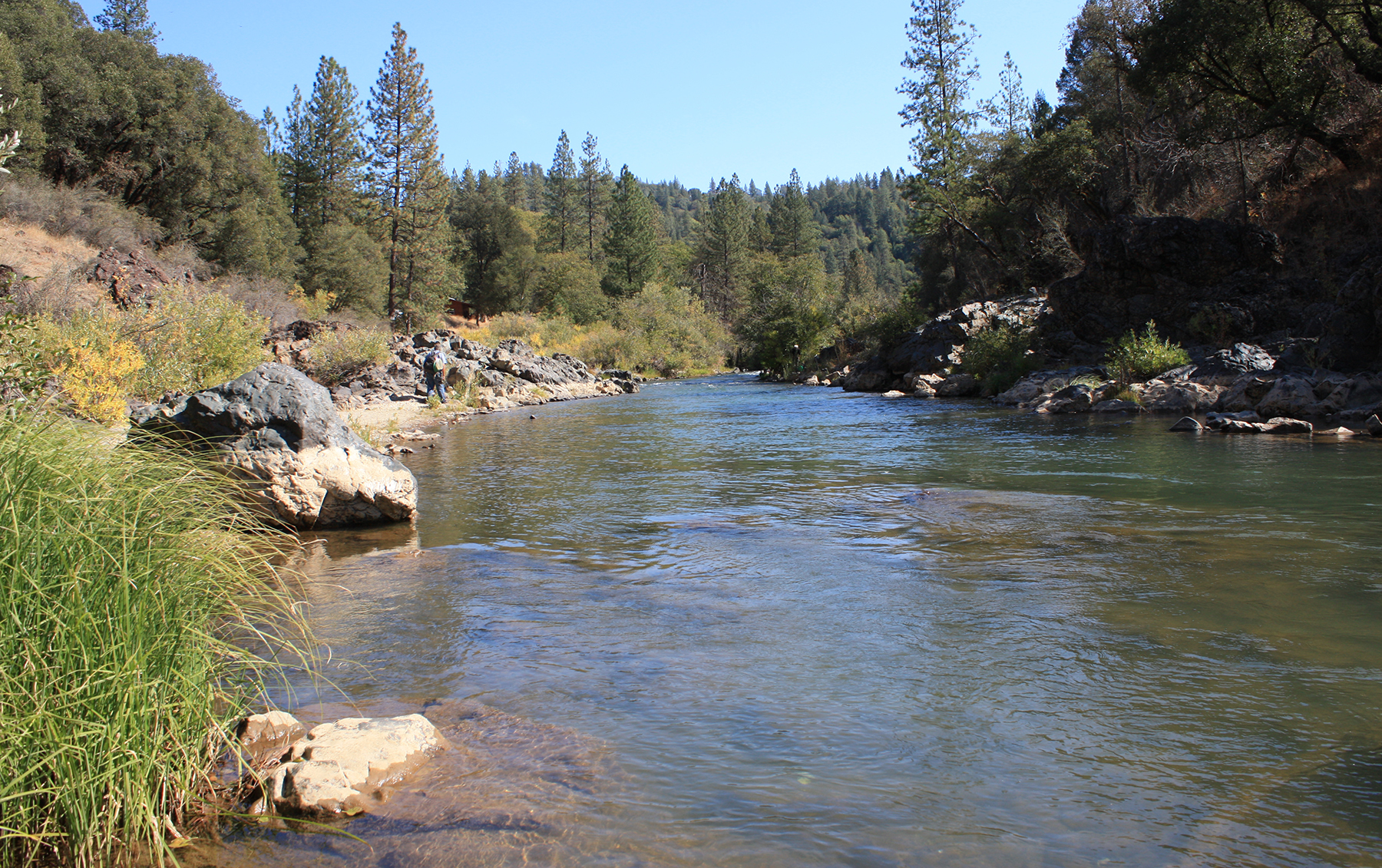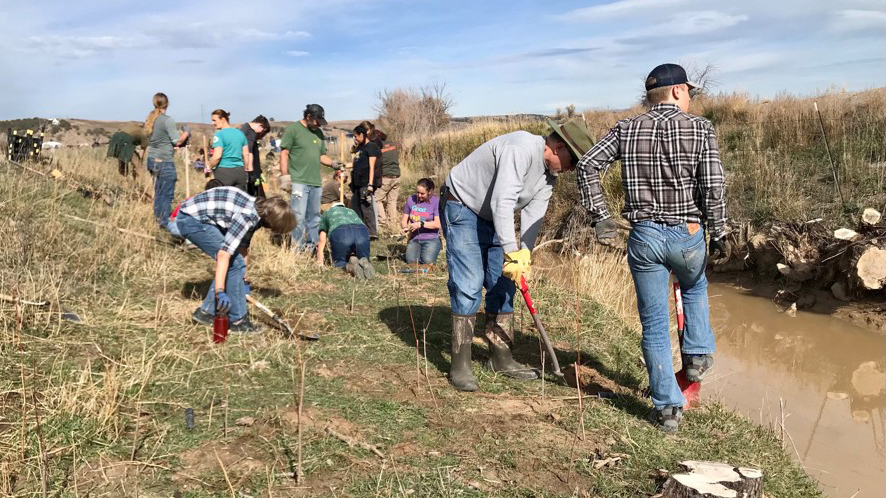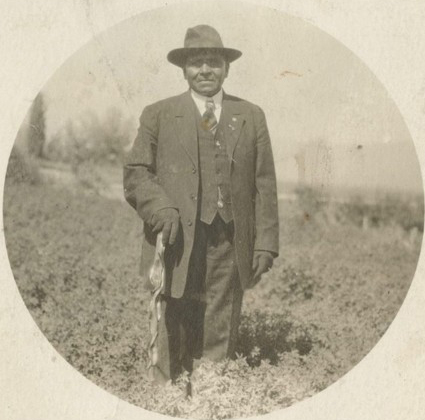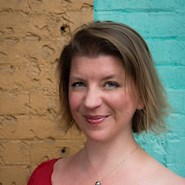 Nick Ares via Flickr
Nick Ares via FlickrIn January 1863, U.S. Col. Patrick Edward Connor led his California Volunteers through deep snow and bitter cold to Bear River to attack the Shoshone people who regularly wintered along the shores of what they called Wuda Ogwa.
What was supposed to be a response to ongoing tensions between the Mormons, settlers, and Indigenous tribes in the area culminated in one of the deadliest massacres of the 19th century – with at least 400 Shoshone men, women, and children killed at the hands of the American troops.
Further reading:
- Benefits flow quickly as historic dam removal restores Klamath River
- Flowing again: Texas restoration project returns streams to natural state
- Frank Lloyd Wright’s small but iconic theater at Taliesin restored
The area was designated a National Historic Landmark in 1990, and a small memorial exists along Highway 91 near Preston, Idaho. But Brad Parry, tribal council vice chair of natural resources for the Northwestern Band of the Shoshone Nation, says the tribe long wanted to reclaim the land that was so important to its people before the massacre.
“Our goal, for a long time, was to have some sort of memorial center there, an interpretive center,” he said. “But once we bought the land back in 2018, and after talking more with the tribal elders, we thought we could do more with the land.
“We could improve it, make it look like it would have before, and create something culturally on the land so we can teach others about our tribe and about the plants we have long used for food, medicine, and shelter.”
Plan escalates
The tribe contacted Brian J. Andrew, P.E., M.ASCE, a principal with Hansen, Allen, & Luce Inc. He had previously worked with Parry on water salinity projects on the Uinta Basin when Parry worked for the U.S. Department of the Interior’s Bureau of Reclamation. What started as a discussion about a water rights study quickly evolved into a plan to restore the newly acquired property to its former glory.
“Back in the 1800s, the tribe wintered there because the river had hot springs,” Andrew said. “There was always warm ground to camp on; it didn’t freeze. There was always feed and grass for the horses. It was a place of enjoyment where the people would play games and gamble and tell stories. All the tribes of the Shoshone would come together to do a Warm Dance to bring on the coming spring.”
 Northwestern Band of the Shoshone
Northwestern Band of the ShoshoneAs Andrew talked more with the tribe, it was clear its members wanted to restore the camp’s resilience and beauty because, as Andrew put it, “the massacre, this horrific event should not be the only thing that defines the tribe.”
Yet getting to that place would take significant effort.
The area, which had been used for agriculture for more than a century, had dramatically changed. Invasive Russian olive trees had usurped the natural willow and cottonwood trees that had once thrived along the banks of the river. The nearby Beaver Creek (renamed Battle Creek after the massacre) had not only been channelized and dammed with colonial canals to help irrigate crops but was also one of the largest point source contaminants to Wuda Ogwa.
“To start, we needed to remove the Russian olives, which is a lot of work, so we could put in the native plants,” Andrew said. “But if we were going to put the plants in, we also needed to clean up the water and put the stream back to where it used to run.”
To do this, the tribe and Andrew relied on tribal elders’ oral stories of the land, maps and documents from the 1800s, old photographs, massacre survival stories, local diary entries, and modern engineering technologies, including geographic information studies and photo lens analysis, to put a feasible plan in place. Andrew said the combination of old and new helped them collect “the whole history” of the place – and understand where to get started.
“When you go out to the site in winter, you can see the hot springs steaming like a locomotive train,” Andrew said. “The river has changed over the past century, but thanks to the springs, as well as the old photos and stories, we can see where the tribe would have camped … and even identified a peninsula where the tribe corralled their horses.”
The Utah Conservation Corps came in to help remove the Russian olive trees – an arduous task because the trees are hardwoods that require stump cutting, drying, and burning to stop them from continuing to propagate. To date, the group has removed these trees from about a third of the site.
But beyond tree removal, reclaiming Wuda Ogwa has also involved a full vegetation inventory, a native plant volunteer replanting, restored water rights, and a doubling of the creek’s stream flow. The group has even constructed a wetland pool habitat, with hopes of inviting wildlife back into the area and making the river clean enough to host its native beavers and Bonneville cutthroat trout.
“It’s been really cool to blend the old stories and the technology back together to work on this,” Parry said. “We really had to get things right – and that will help us not only tell the story of the massacre but of our people.”
When asked how other civil engineers can successfully work with Native American tribes on other reclamation projects, Parry has straightforward advice: Listen.
Don’t rush things
“I like to say, ‘If you’ve worked with one tribe, you’ve worked with one tribe,’” he said. “With any project, you need to make sure you understand their needs, their goals, and their customs.”
He added that it’s also important to understand that tribal entities move at their own pace – so patience also helps. But by listening and asking how you can help, Parry said, you can better ensure success.
And Parry believes, though the project is far from complete, that reclaiming Wuda Ogwa has been successful. He thinks the tribe is well on its way to having a site where people can visit a museum and cultural center and walk on paths throughout the site to learn about the area’s geology, history, and culture.
He looks forward to the day when the Northwestern Band of the Shoshone Nation can invite its sister and cousin nations to join it on this sacred land and welcome spring with a Warm Dance – something that has not occurred since the massacre.
 Northwestern Band of the Shoshone
Northwestern Band of the Shoshone“Our ultimate goal is to have an interpretive center overlooking a landscape with a functioning ecosystem and conservation area full of trees, water, fish, eagles, and birds,” Parry said. “Our people were on this site for thousands and thousands of years before the massacre. We camped there and would do the Warm Dance each year.
“But what was once such an important place for us changed in one day, and that change has lasted for 160 years. We are changing it back. It will allow us to take back the narrative and share our culture and our traditions for years to come.”



